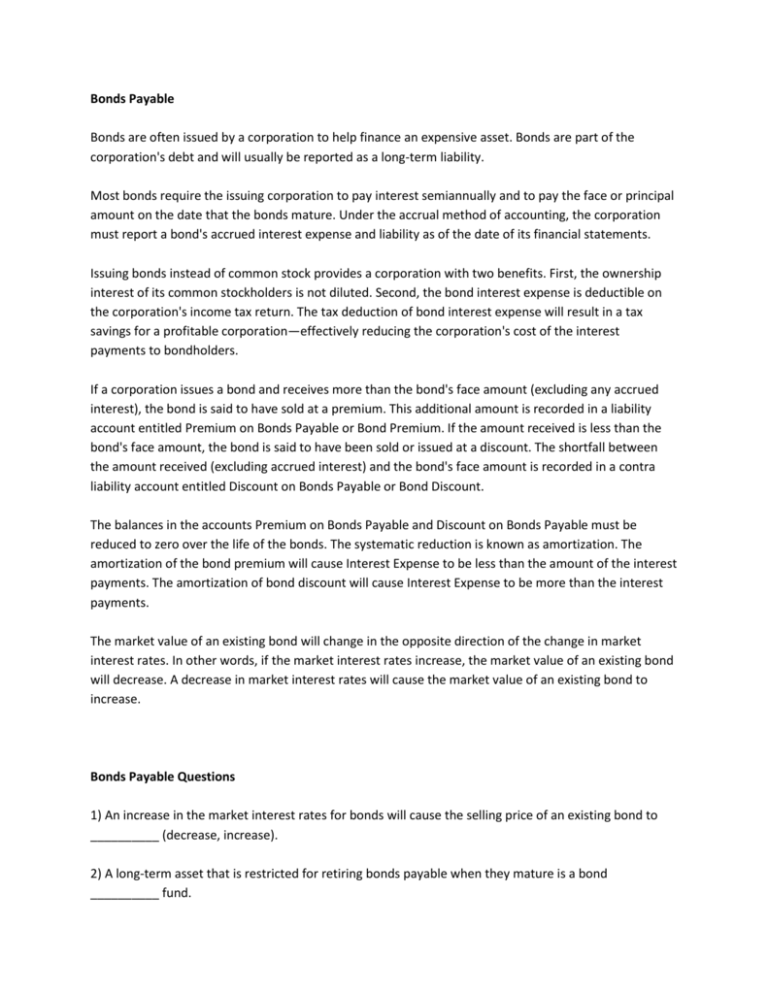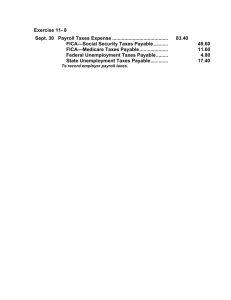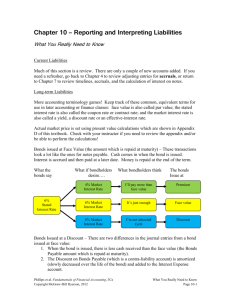File - ISDC Accounting College
advertisement

Bonds Payable Bonds are often issued by a corporation to help finance an expensive asset. Bonds are part of the corporation's debt and will usually be reported as a long-term liability. Most bonds require the issuing corporation to pay interest semiannually and to pay the face or principal amount on the date that the bonds mature. Under the accrual method of accounting, the corporation must report a bond's accrued interest expense and liability as of the date of its financial statements. Issuing bonds instead of common stock provides a corporation with two benefits. First, the ownership interest of its common stockholders is not diluted. Second, the bond interest expense is deductible on the corporation's income tax return. The tax deduction of bond interest expense will result in a tax savings for a profitable corporation—effectively reducing the corporation's cost of the interest payments to bondholders. If a corporation issues a bond and receives more than the bond's face amount (excluding any accrued interest), the bond is said to have sold at a premium. This additional amount is recorded in a liability account entitled Premium on Bonds Payable or Bond Premium. If the amount received is less than the bond's face amount, the bond is said to have been sold or issued at a discount. The shortfall between the amount received (excluding accrued interest) and the bond's face amount is recorded in a contra liability account entitled Discount on Bonds Payable or Bond Discount. The balances in the accounts Premium on Bonds Payable and Discount on Bonds Payable must be reduced to zero over the life of the bonds. The systematic reduction is known as amortization. The amortization of the bond premium will cause Interest Expense to be less than the amount of the interest payments. The amortization of bond discount will cause Interest Expense to be more than the interest payments. The market value of an existing bond will change in the opposite direction of the change in market interest rates. In other words, if the market interest rates increase, the market value of an existing bond will decrease. A decrease in market interest rates will cause the market value of an existing bond to increase. Bonds Payable Questions 1) An increase in the market interest rates for bonds will cause the selling price of an existing bond to __________ (decrease, increase). 2) A long-term asset that is restricted for retiring bonds payable when they mature is a bond __________ fund. 3) Bonds without specific _________________ are unsecured bonds known as debentures. 4) When the premium on bonds payable is _______________ by the issuer, the carrying value of the bonds will decrease. 5) Bonds that mature on a single date are referred to as _______ bonds. 6) If an 8% bond is offered in a market that demands 7.9% interest, the amount received by the issuer will be ________ (less, more) than its face amount. 7) If the issue price of a new bond (excluding any accrued interest) is less than the bond's face amount, the difference is recorded as ______________ on Bonds Payable. 8) The effective interest rate method results in a correlation between a bond's interest expense and its carrying or __________ value. 9) The proceeds of a 9% $400,000 bond issued at 101 will be four hundred _______ thousand dollars plus accrued interest. 10) A bond maturing in three years will be reported on the issuer's balance sheet as a long-term _____________.








